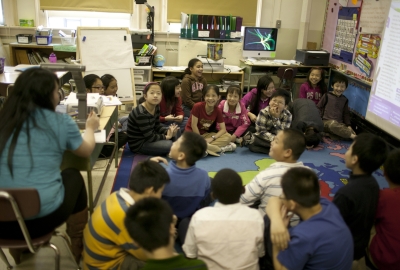
Examining School Climate, Teacher Turnover, and Student Achievement in NYC
By Matt A. Kraft and William H. Marinell (March 2016)
During the last decade, education research and policy have generated considerable momentum behind efforts to remake teacher evaluation systems and place an effective teacher in every classroom. But schools are not simply collections of individual teachers; they are also organizations, with structures, practices, and norms that may impede or support good teaching. Could strengthening schools—as organizations—lead to better outcomes for teachers and students?
This study begins to address that question by examining how changes in school climate were related to changes in teacher turnover and student achievement in 278 NYC middle schools between 2008 and 2012. Drawing on teacher responses to NYC's annual School Survey, as well as student test scores, human resources data, and school administrative records, we identified four distinct and potentially malleable dimensions of middle schools' organizational environments:
- Leadership and professional development;
- High academic expectations for students;
- Teacher relationships and collaboration; and
- School safety and order.
We then examined how changes in these four dimensions over time were linked to corresponding changes in teacher turnover and student achievement. We found robust relationships between increases in all four dimensions of school climate and decreases in teacher turnover, suggesting that improving the environment in which teachers work could play an important role in reducing turnover. (The annual turnover in NYC middle schools is about 15 percent.)
We also discovered that improvements in two dimensions of school climate—safety and academic expectations—predicted small, but meaningful gains in students' performance on standardized math tests.
Taken together with other emerging evidence, these findings suggest that closing achievement gaps and turning around struggling schools will demand a focus on not only individual teacher effectiveness, but also the organizational effectiveness of schools. The policy brief outlines several potential areas of focus for districts that want to help schools in building healthy well-functioning organizations.
Update, October 2016: An updated version of the full paper (School Organizational Context, Teacher Turnover, and Student Achievement: Evidence from Panel Data) is available in the October 2016 issue of the American Educational Research Journal.
Supported by the William T. Grant Foundation.

